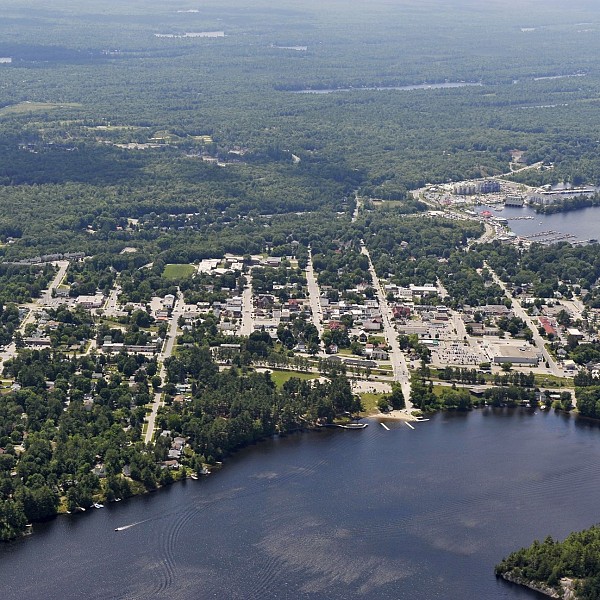Gravenhurst approves new ward boundary alternative
Gravenhurst Council approved a new ward boundary alternative, in the November 19, 2024, meeting.
According to the final report by Watson and Associates Economists, the review on the current Council composition and ward boundaries was initiated to help Council determine potential adjustments to the electoral structure.
The current Council structure adopted 10 years ago has 9 members, including the mayor, 3 District councillors, plus 5 location councillors.
The report adds that consideration was needed to determine current viability given the length of time since the last adoption of the structure about 10 years ago. It adds, “Aligning Council representation with the distribution of population will likely require an adjustment in some or all wards.”
It estimates the Town’s current population at 26,516, including 12,350 (or almost 50%) being seasonal residents. Population growth is expected to reach over 28,716 - mostly due to growth in the urban core - by 2034.
Current ward boundaries involve a 3,800-population difference between ward 1 and 2, with a population of 7656 in the first ward (part of the urban core) and 3,800 in the second ward (the northwestern portion). Ward 3 is 6,682, 4 is 3,977, and 5 is 4,400.
According to the staff report, “If the most populated ward has over 7,000 residents, and the lowest population ward has under 4,000, the voices heard, and votes cast by the lowest population ward would carry more weight than those of the highest population ward.”
It adds, the consultant recommends the third of five options provided to Council, deeming effective representation a key factor in boundary division, “the right to be represented equitably in the deliberations of government.”
This option allows for better ward divisions providing more “effective, equitable and democratic system of representation” with equal responsibility between population numbers, rather than overburdened, such as in ward 1 under the current system, continues the staff report.
However, Council chose option two, which according to the consultant report, “brings stronger parity between wards 3 and 4, and is the preference from the community as it retains the community west of the conservation area with the Highway 11 community where there are strong ties too.”
It adds, “This option does not address the long-term population disparity in Wards 1 and 2.”
With this option, over the next 10 years, Ward 1 will have a population of 7,524, 2 will have 4,301, 3 will have 4,392, 4 will have 6,284, and 5 will have 6,213, according to the report.
It continues, “Future population imbalances hinder the achievement of complete effective representation.”
Mayor, Heidi Lorenz, expressed concern about the public consultation, questioning the contrast between the number of responses between the wards. She asked, “How much did large numbers on the surveys in Ward 2 influence that decision because that seems that for the smallest ward there was a lot of response?”
She added, “It seems strange so skewed out with Ward 2.”
According to the report, 20 people responded from Ward 1, compared to 61 in Ward 2, 5 in Ward 3, 3 in Ward 4, and 40 in Ward 5.
The consultants suggested that the high number of respondents from Ward 2 is “providing insight regarding the options.”
Ward 1 Councillor, Penny Varney, expressed that she was not in favour of the option 3 recommendation. She said, “Historically the main Town has always been Ward 1.” She added that there is also cost and confusion when changing boundaries.
She added, “In the preliminary evaluation the suggestion [was] ‘that the ward with the most constituents gets the highest rate of inquiries.’ I don’t agree with that. I believe that development and activities factor in more with the questions, not the number of constituents.”
Lorenz asked the consultants about the importance of representation by population is.
The consultants advised, “It’s more than a 7… It’s fundamental you have to have representation by population.”
Councillor, Randy Jorgensen, supported the third option. He said, “All Councillors have a mix of settlement areas, rural for the most part, and waterfront because we can’t specialize.” He added, “I don’t believe there should be an urban expert or the increased density expert. We need to be aware of all the issues.”
Councillor, Erin Strength, concurred. She said, “The Town of Gravenhurst is a diverse Town, made of land and sea, and so we have to be well-versed in all of those different facets of what we have here.”
After much debate between Council members, they chose option 2 in a recorded vote of 5 to 4.
Watson representatives advised Council that the public has 45 days to appeal the new by-law through the Ontario Land Tribunal.
In the meantime, staff will bring a new by-law forward to Council outlining more detailed information about the new boundaries at the upcoming Council meeting on December 17th.












